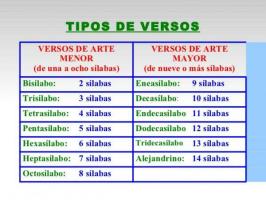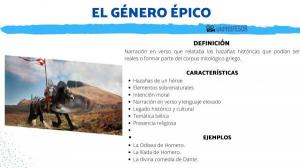What is a Review?

What is a Review? A review is an oral or written representation in which the work of an author, artist or professional who exhibits his material is evaluated, criticized and / or described. A review belongs to the journalistic genre of opinion, just like the editorial, the column, the commentary and the article. Although each one maintains its differences, they all have in common that they contain comments, criticisms, evaluations and expectations on some topic, work, event or event. Reviews are applicable to movies, books, galleries, exhibitions, plays, music albums, and even gastronomic dishes, sporting events, and many more creations. It may interest you: Biography of Charles Dickens, English novelist.
Those who prepare the reviews are usually experts in the relevant field and are often referred to as “reviewers”. Although some authors point out that a review must be objective, when contemplating the opinion or criticism of a single person, it is more related to subjectivity. A review is not the same as a synopsis, a concept that is very confused. The difference is that the synopsis does not involve the opinion or criticism of the evaluator, it simply offers a general and summarized overview of what a topic or work is about.
There are two basic types of review: descriptive review and critical review.Index
- Descriptive review and critical review
- How to write a review
- Organization of a review.
Descriptive review and critical review.
Descriptive review: Informs the receiver about a work, mentioning its characteristics and following the steps of identification, description and summary.
Critical review: The reviewer issues an evaluative judgment where he identifies, describes, summarizes and gives his opinion. The purpose of a review is to guide the reader about a work, so that he can persuade her to give him part of her time or not. That is, a review is useful to save a reader time and/or money, or to make a worthwhile investment. The result is variable, because, even if the reviews come to show that the work is not good or is sparse in certain respects, this turns out to be attractive to some readers who want to see if it is TRUE. Others still prefer to accept the suggestions and look for other options, or, on the positive side, the attraction of the reader it can also come from good arguments and valuable information that makes the suggestion attractive and invites the knowledge.
How to write a review.
To write a review it is very important to look at the entire work and consider several points. For example, if it is a movie, through the corresponding steps (description, summary, etc.) the performance of the actors, the photography, the plot and the direction, special effects, etc., are analyzed. etc If it is a book, you can also talk about the plot, the characters, the message, the syntax, etc. In the case of musical reviews, it can be mentioned whether or not there was a new proposal, if the lyrics had a good content, if the sound was 'loyal' to the style of the artist or group, among other important, attractive and informative aspects for the interested.
Despite the fact that a review is naturally subjective, an attempt is made to seek objectivity, so that the personal taste of the reviewer is not involved. For example, if the reviewer does not like musical plays, he must put his personal taste aside in order to make a sensible and fully judgment or criticism. outside of your preferences, since, otherwise, no musical work will be able to meet your expectations, no matter how produced or great it is, and your quality as a reviewer will be seen affected. One suggestion is to apply those aspects or standards that do not please, towards descriptive explanations that become relevant information.
Separate by paragraphs each aspect that you want to examine. Actors, performances, context, sound, etc., so that the reader can observe a clear and orderly review.
It is ideal to use interesting language that captures the reader's attention and to be very clear about what type of audience will read it: children, adolescents, followers, the general public.
Points to take into account.
Don't give too much information about the plot. Nor is it necessary to mention all the characters or make a broad description of them. It is about linking ideas that are entertaining for the reader, not creating more doubts or raising points that cause boredom. The opinion should not exactly start with an "I think what...", but rather it can be included fluidly within the text. For example: “this impressive work of interesting characters…”.
Organization of a review.
Like all text, a review must also contain an entrance, a development and a conclusion or closure. In the introduction it is essential to include the name of what we are analyzing and brief details about its creation, as name of the author, year of elaboration or publication, if it was based on any previous work, etc A brief summary of the work is provided below. That is, what it is about and who are the main characters, as well as the role or position they occupy. The reviewer's opinion may be involved from this point. In the development, all the elements that were taken into account for analysis are shown, with their respective opinions of successes and deficiencies. It is recommended to start with the successes or positive points of each area, to later mention what could be improved or what should not have been.
In the conclusion simply a final verdict is given where the reviewer recommends or warns about the content of what was analyzed. With this, the reader will decide if he invests more time or not. One recommendation is to mention what kind of people a work is recommended to. For example: "Those who enjoy classic rock...", "for lovers of period movies de oro of Mexican cinema…”, etc., in such a way that a large number of receivers can feel involved. Despite the fact that a review must meet certain characteristics, the style of each reviewer is totally free. Depending on the type of publication where his reviews are displayed, the language must be clear and attractive. as mentioned above, but the type of language used is part of the personal style of the writer. There are reviews where the words could be "kind" even though the inclination is negative, but others can be a bit "hard" or cruel to the creators, generally due to the honesty of the words. The size of a review is also variable, but it is not recommended that it be larger than one page.
If you want to read more articles similar to What is a Review?, we recommend that you enter our category of literary concepts.



